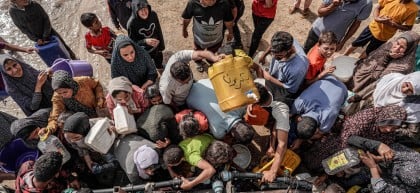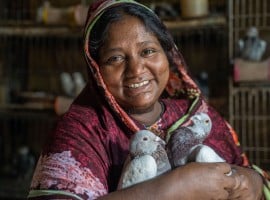
Read our 2024 annual report

Knowledge Hub
In the last decade, we’ve faced several threats to the progress made towards ending hunger.
The COVID-19 pandemic accelerated an economic crisis and disrupted trade routes affecting billions. Conflicts have accelerated, further cutting people off from food who need it most. And climate events have become routine, the rule versus the exception.
In 2025, we’re still roughly 150 million people above the hunger rates we were at in 2019. What’s more, in the last year two famines have been confirmed — one in Sudan, the other in Gaza.
One of the most ambitious of the UN’s Sustainable Development Goals is to achieve Zero Hunger by 2030. However, with five years to go, the 2025 Global Hunger Index notes that we’re still more than a century away from achieving even “low” levels of hunger in many of the hungriest countries in the world.
So here’s the question: Can world hunger be solved?
Our short answer: Yes. But let’s look at what that would really mean.
What do we mean by Zero Hunger?
When we talk about solving world hunger, we’re usually talking about the second SDG, Zero Hunger. This already sounds like a clear-cut goal with a number and an issue. But obviously that’s a big thing to measure. The UN has provided some key performance indicators against this goal, meaning that we can measure how much we’ve reduced hunger levels around the world through the following:
- Access to safe, nutritious, and sufficient food year-round and around the world
- The end of malnutrition in all its forms
- Increased levels of agricultural productivity and resilience
- Sustainable and equitable food systems
- Diversified crops and seeds
These indicators are connected, but in different countries and communities, the focus may be different, based on whether the causes of hunger in those contexts are more focused on access or availability (or both). Families in the Horn of Africa face different challenges than families living in Bangladesh’s capital of Dhaka (and even within the Horn of Africa challenges may vary between countries, regions, and villages).
There are also different ways of measuring hunger, but many of them point to the same issues: Rates of undernutrition among children and adults, rates of both acute and chronic malnutrition among children — also linked heavily to the effects of hunger and malnutrition.
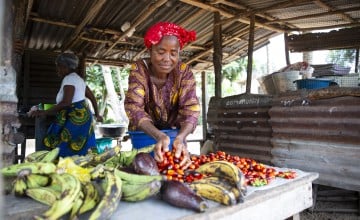
How can we end hunger?
Knowing how we quantify hunger and what we need to do to reduce those numbers, we can then focus on the root causes of hunger in different communities — and how those causes work together.
“Hunger has often been framed as an achievable numbers game of producing more food to feed more people,” says historian and Harvard professor Gabriela Soto Laveaga. “Yet history shows that science alone — even with generous funding — cannot solve an issue that is social, political, and economic, such as hunger.”
Hunger has often been framed as an achievable numbers game of producing more food to feed more people. Yet history shows that science alone — even with generous funding — cannot solve an issue that is social, political, and economic, such as hunger.
Dr. Soto Laveaga notes that, while there are many solutions to hunger on a community level (many of which are central to Concern’s work in health, nutrition, and agriculture), hunger is an issue that goes beyond numbers. It is also “a matter of equitable distribution of locally grown food.” Let’s take a look at what that means from the social, political, and economic lenses that she mentions.
Social solutions to hunger
Everyone can feel hunger, but hunger doesn’t have the same effect on everyone who experiences it. Food systems are inherently social systems, so strengthening social ties will help those who are at the greatest risk for the effects of hunger to have more knowledge and resources to stay well-fed and nourished.
“The priority group for nutrition include children under five, adolescents, women of reproductive age, and the elderly,” says nutritionist and Masai activist Jane Napais Lankisa.
As we noted above, children are especially vulnerable to the effects of hunger and malnutrition as their bodies are still developing. Malnutrition weakens key functions like cognition, as well as immune systems, meaning that many children who die from hunger are really dying from diseases or infections that their bodies can’t fight off.

Malnutrition often works as a cycle, with mothers-to-be who experience malnutrition during their pregnancies “passing” it on to their children. It’s not necessarily a genetic condition, but malnourished mothers are more likely to have malnourished children due to a lack of enough food and nutrients.
Adolescence, however, is one area that Napais Lankisa calls “the second window of opportunity to end the intergenerational cycle of malnutrition.
“This stage is characterised by rapid physical, cognitive and psychosocial growth,” she adds. “There are 1.3 billion adolescents in the world today, more than ever before, making up 16% of the world's population. Nevertheless, this age group is classified as most vulnerable to malnutrition according to the WHO.”
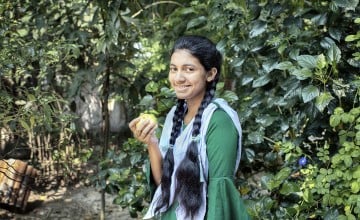
Political solutions to hunger
Some of the largest causes of hunger are beyond any one person’s or society’s control. This is especially true for the two largest contributors to our global food security crisis: conflict and climate. This is where we need action at both national and international levels of leadership.
“We need political leadership to strengthen international food security policy. This depends on political decisions in western capitals — and these are not always easy to make,” says Alex de Waal, executive director of the World Peace Foundation at the Fletcher School of Law and Diplomacy at Tufts University and past contributor to the Global Hunger Index.
“Political commitment at the highest levels to prevent famine, no matter what the political context, is needed. Countries in need should be aided, regardless of their standing with any other government.”
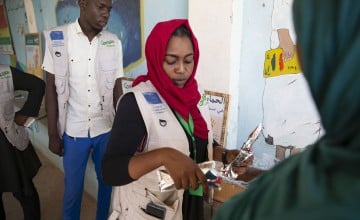
Joseph Nyumah Boakai, who has served as both Liberia’s Minister of Agriculture and Vice President, adds that there needs to be a distinction made “between our goal for ending hunger and malnutrition and placing the food security of our individual countries and that of our world on a sustainable path.” Ending hunger is a first response, but it will only be sustainably ended with an additional focus on long-term food security.
Nyumah Boakai adds that, at the national level, countries “must ensure that smallholder farmers are both protected from the threats of climate change and promoted as custodians of natural resources so that they share the responsibility for protecting the planet.”
We need political leadership to strengthen international food security policy.
Economic solutions to hunger
The biggest link to hunger is poverty. The fewer resources people have, the more risks they face during times of food shortages, inflation, and hungry seasons between harvests.
“The world already produces enough food to feed everyone. This production is, however, unequally distributed across countries and across households and individuals within countries,” says economist Caroline Krafft (who authored the chapter “Can We End Hunger?” for the textbook Economics for the Greater Good).
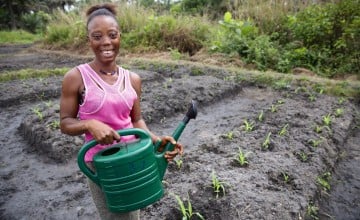
“Differences in technology, physical and human capital, and labour across countries are a key driver of international inequality.”
In this sense, many of the solutions to poverty are also solutions to hunger. And the success of these solutions comes down to how much they account for those who are left furthest behind.
The world already produces enough food to feed everyone. This production is, however, unequally distributed across countries and across households and individuals within countries
So… can world hunger actually be solved?
These solutions and approaches aren’t the whole story when it comes to ending hunger. One of the most important factors, as Concern’s Dominic MacSorley wrote in 2021, is funding for countries, organisations, and initiatives working against hunger and malnutrition. Rising hunger levels and falling levels of humanitarian funding create a critical situation.
“Despite all that humanitarian assistance is achieving, and its extraordinary impact, it is falling short,” writes MacSorley. “The combination of new and unprecedented levels of need and the inadequate levels of humanitarian funding has put us on course for great tragic and avoidable loss of life. This is inexcusable. No one should die because of a lack of money or will.”
At this point, we are almost guaranteed to not meet the goal of Zero Hunger by 2030. According to the 2025 Global Hunger Index, we likely won’t even get to low levels of global hunger for another century.
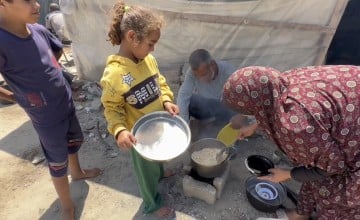
The good news
But that doesn’t mean that there isn’t progress still being made. In fact, after nearly a decade of rising hunger levels (particularly after the knock-on effects of the COVID-19 pandemic), we’ve started to once again go down in terms of the number of hungry people in the world. In 2023, an estimated 733 million people experienced acute hunger, and in 2021 that number was 828 million.
We’ve also made significant progress in the last six decades: 55 years ago, one in four people around the world went hungry. In 2016, that number was one in nine. Today, that figure is one in eleven.
Yes, many countries have lost progress in the last ten years. Yes, two famines have been confirmed in the last year. “The story of reducing hunger has not been linear, and is certainly far from triumphant,” MacSorley writes.
But it isn’t impossible.
